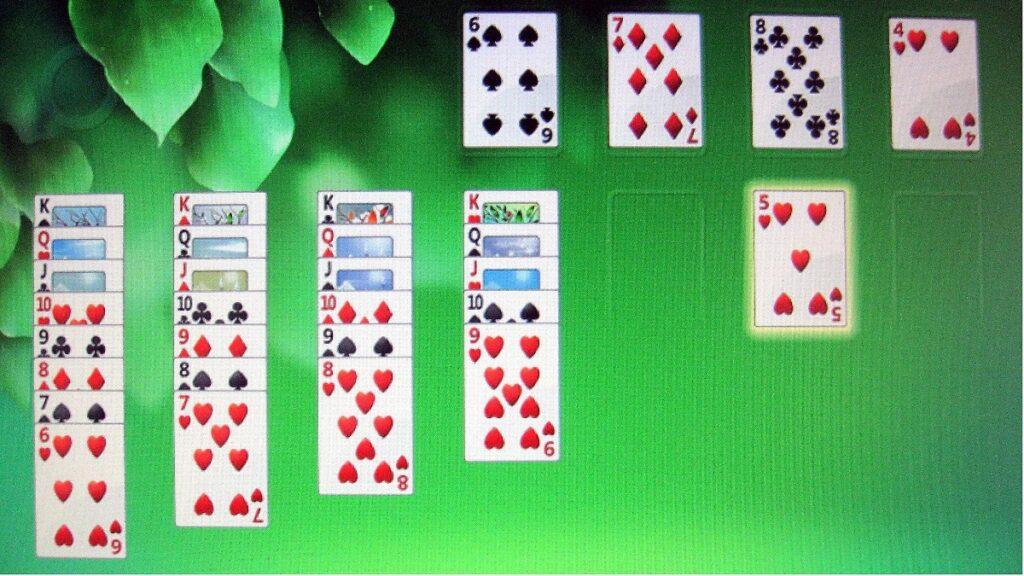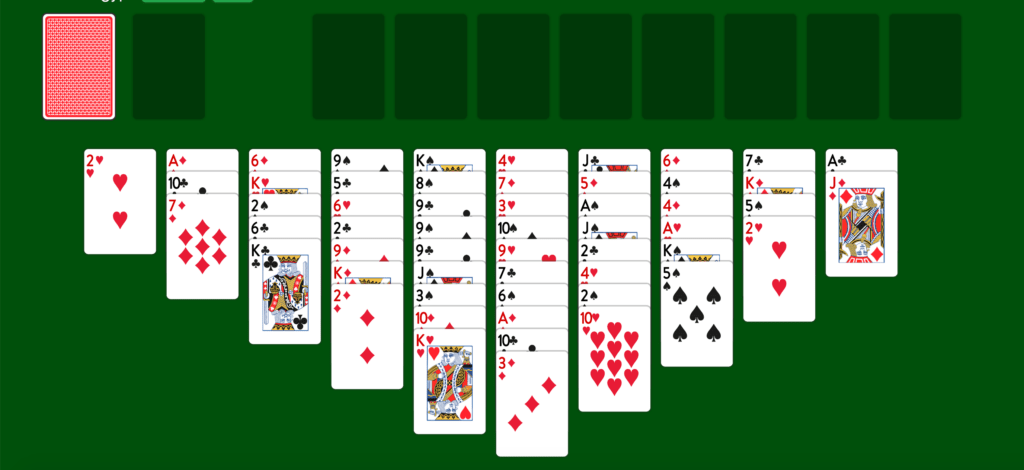Klondike Solitaire is a popular card game, often just called Solitaire. It involves a single player arranging a standard deck of 52 cards in a specific layout, aiming to move them onto four foundation piles in ascending order, one for each suit. The game begins with seven tableau columns, with the first column containing one card, the second column two cards, and so on, up to the seventh column. Only the top card of each tableau pile is face up; the rest are face down. The remaining cards form a stockpile, which can be drawn from to help arrange the cards on the tableau and foundations.
Table of Contents
The Complexity of Solitaire

The game’s complexity arises from the rules governing card movement. Players can only move cards under specific conditions, such as placing a red six on a black seven or moving groups of ordered cards as a unit. This complexity makes it challenging to determine the exact percentage of winnable games. The outcomes depend on the initial card arrangement and the player’s decisions. Unlike some other games, it’s not always possible to win at Klondike Solitaire Mobile, regardless of the strategy used.
Investigating Winnability Rates
Researchers and computer scientists have long been interested in determining what percentage of Solitaire games are winnable. Early attempts at solving this problem involved manual play or basic computer simulations. However, these methods were limited in their accuracy and scope. With advancements in technology, more sophisticated algorithms and powerful computers have enabled a more accurate analysis of Solitaire games.
Computer Simulations and Findings
One of the most extensive studies used computer simulations to play millions of Solitaire games. These simulations followed optimal strategies to maximize the chances of winning. Results from various studies and simulations have varied, but a common finding is that about 80% to 90% of Klondike Solitaire games are theoretically winnable. However, the actual win rate for players is much lower, often below 50%. This discrepancy is due to the complexity of the game and the inability of players to always spot the optimal move.
Impact of Skill and Strategy

Player skill significantly impacts the win rate in Solitaire. Skilled players who understand the game’s intricacies and can plan several moves ahead have a higher chance of winning. Strategic considerations include knowing when to draw from the stockpile, how to uncover hidden cards, and the optimal order for moving cards to the foundations. Learning and mastering these strategies can increase a player’s win rate.
The Role of Luck
Despite the importance of skill and strategy, luck plays a crucial role in Solitaire. The initial setup of the cards can make some games unwinnable from the start. In some cases, necessary cards might be buried deep under others, making them inaccessible. Therefore, even the best players can lose a game of Solitaire if the card arrangement is particularly unfavorable.
Variability in Game Versions
Different versions of Klondike Solitaire can also affect winnability. The most common variation is the draw-three rule, where three cards are drawn from the stockpile instead of one. This variation makes the game more challenging and can significantly lower the percentage of winnable games. The draw-one rule, which is easier, allows for a higher percentage of winnable games. The choice of rules can thus greatly influence the overall difficulty and win rate of the game.
Analyzing Decision Points
Key decision points in Solitaire often determine the game’s outcome. These include choices about which card to move, whether to draw from the stockpile, and when to transfer cards to the foundation. Skilled players analyze these decision points carefully, considering both immediate moves and their long-term impact on the game. Understanding and mastering these decision points can significantly improve a player’s odds of winning.
Statistical Approaches

Statisticians have applied various models to estimate the probability of winning a Solitaire game. These models consider factors like the distribution of cards, possible moves, and the sequence of play. By analyzing the game through statistical lenses, researchers can better understand the dynamics of Solitaire and the likelihood of winning under different scenarios.
Human vs. Computer Play
The difference in win rates between humans and computers highlights the game’s complexity. While computers can calculate and execute optimal strategies, human players rely on intuition and experience, which may not always lead to the best decisions. This difference underscores the importance of experience and strategic understanding in increasing a player’s win rate.
Improving Player Win Rates
Players looking to improve their Solitaire win rates can benefit from studying strategies and patterns. Resources like books, online tutorials, and Solitaire communities offer valuable insights into advanced strategies and common pitfalls. Practicing regularly and analyzing past games can also help players develop their skills and make more informed decisions during play.
Future Directions in Solitaire Research

The study of Klondike Solitaire continues to evolve, with researchers exploring more sophisticated models and simulations. Future research may provide even more accurate estimates of winnability rates and uncover deeper insights into the game’s strategic elements. As computational power increases, so too will our understanding of this classic card game.
Enhancing Skills Through Analysis
For those seeking to improve their Solitaire game, one effective method is analyzing completed games. Reviewing games can reveal missed opportunities and strategic errors, providing valuable lessons for future games. Advanced players often go through this process, using it as a tool to refine their decision-making skills. By understanding the impact of each move and recognizing patterns in gameplay, players can significantly increase their chances of winning.
Final Thoughts
In conclusion, determining the exact percentage of winnable Klondike Solitaire games remains a complex question, influenced by the version of the game, the player’s skill and strategy, and the inherent luck of the card arrangement. While computer simulations suggest a high theoretical win rate, the actual rate for players is much lower. This gap highlights the challenging and engaging nature of Solitaire, a game that continues to captivate players with its blend of strategy, skill, and chance.



